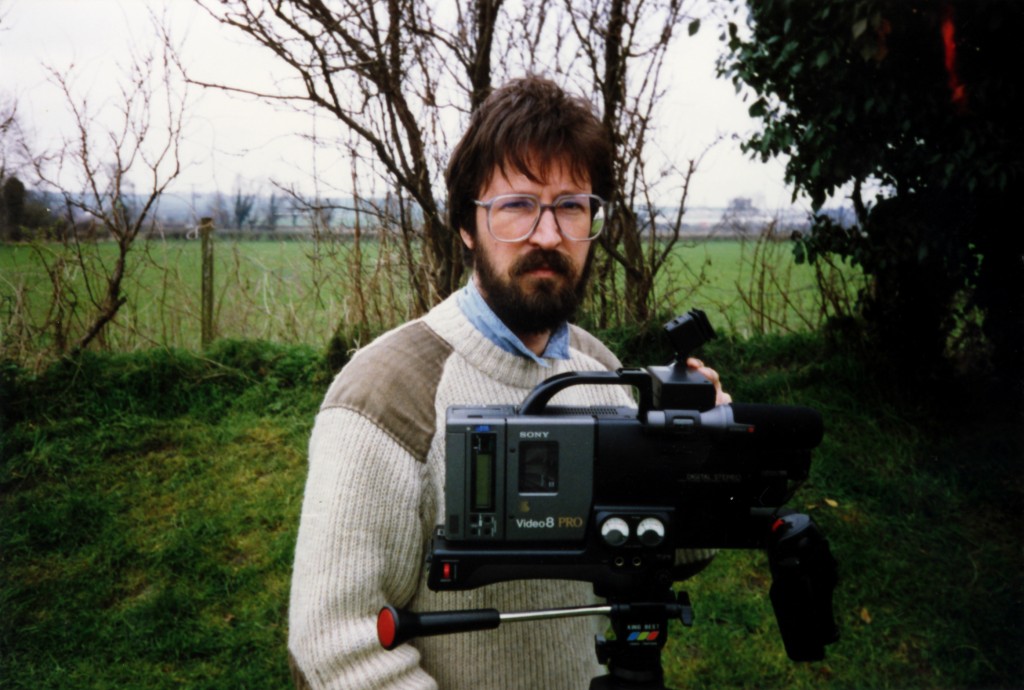Profile 1
Chris Meigh-Andrews: A Profile by Sean Cubitt
Few video artists have worked so determinedly within the conceptual problematic as Chris Meigh-Andrews. However, his commitment to the intelligence of art as a way of thinking has, in a career spanning sixteen years, been more than theoreticist. Early works share the neo-modernist aesthetic of his contemporaries, unpacking the dominance of television to unearth a mode of practice entirely appropriate to video. The works of the 1980s are language-based and semiotic in inspiration, but marked, especially in Time Travelling/A True Story (1982), by an attention to the making of the image which lifts it out of the run of Screen- derived work of the period. Interlude (Homage to Bugs Bunny) (1983) loops a detail of an impossible chase from a Chuck Jones cartoon, while the soundtrack churns a detail of music into existential vertigo.
Mid -80s single channel works return to earlier autobiographical studies, but with a meticulous sense of the capacity of the video image to generate unreality as fast as it builds recognition. In The Stream (1985-87), elementary, even elemental aspects of an English landscape are slowed, mirrored and colourised to produce a statement on the transmutation of nature that balances between the philosophical and the alchemical. Other tapes explore the transformation of the personal in this most intimate of media, notably in An Imaginary Landscape (1986) in which a recognisable domesticity is re configured out of illegible but carefully equilibrated pixels, digitised into blocks of colour. As the image clarifies, the scale of abstraction rises, as the symmetry of the frame about its vertical axis intrudes further into consciousness: is this landscape imaginary because it is symmetrical? Like mud sedimenting out of river water, the raw footage emerges as the imaging of the imaginary, of self image and imagination. In Other Spaces (1986), images of interior and exterior meet, compound and confound one another, marked in each instance as the trace of someone constantly passing out of vision, a figure (the artist?) running across the screen. This interplay of natural and artificial, of perception and image-making, underlies Meigh-Andrews’ major work in installation since the beginning of the 1990’s, notably in three sculptures, Eau d’Artifice (1990), Streamline (1992) and Perpetual Motion (1994), each of which draw natural and artificial into complex interplays. The first reconstructs a rococo fountain, the second a stream from Monet’s Givenchy garden, from monitors, playing on the flows of water and current, while the third uses the standard electricity supply to power in turn a fan, a wind turbine, a computer and its images of the wind- a kite in the ceiling, blown grass on the floor. In all three, the complexities of drawing the natural world into the gallery provide the founding metaphor for the work. More recently, these researches have been enhanced by an adventure in interactive media, notably in CD-ROMs drawing on a library of self-portraits amassed over the years. Throughout a distinguished career, Meigh-Andrews’ meticulous craft and intelligence mask a slow-burning, passionate commitment to the interface of technology and intimacy.
Directory of British Film & Video Artists, Arts Council England, London, 1996.
